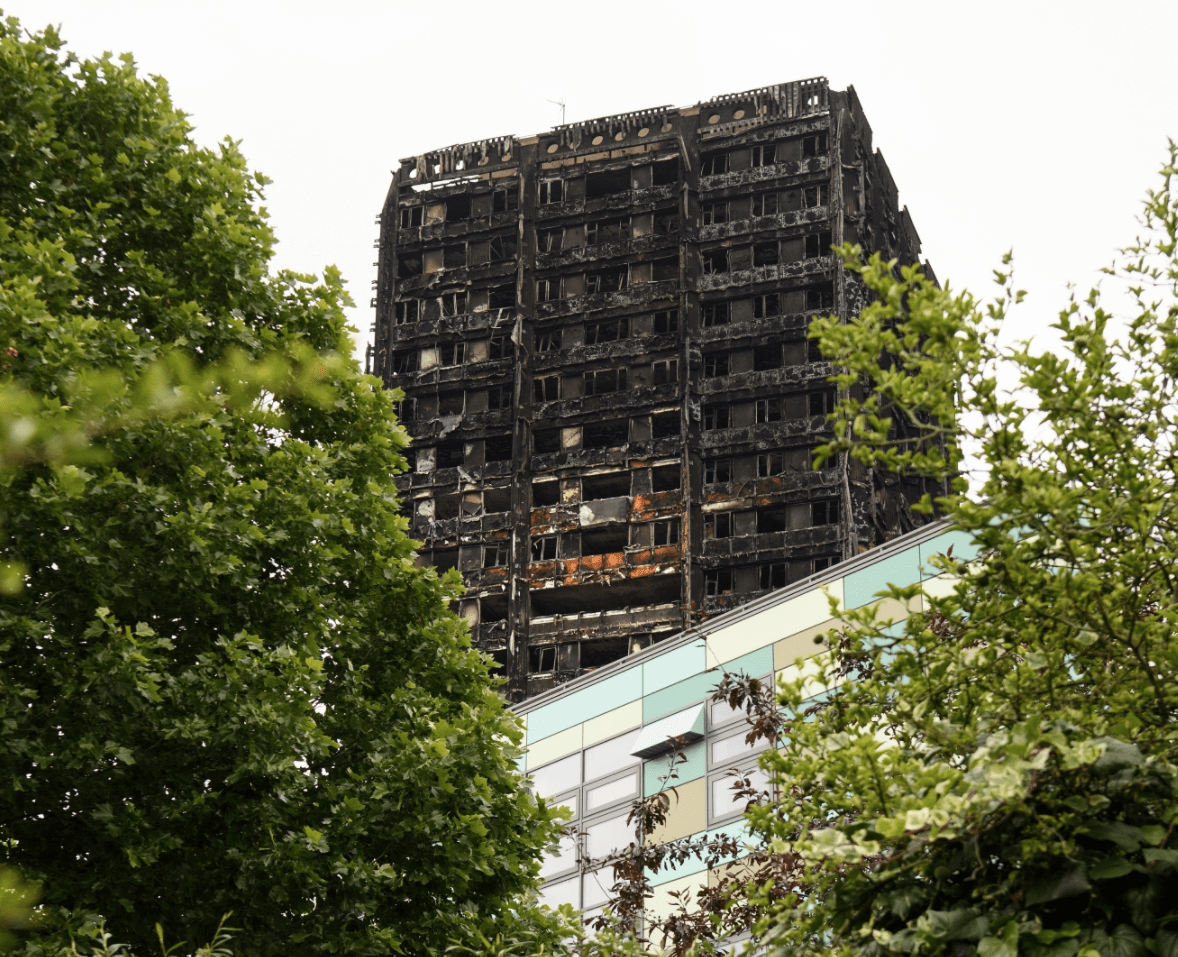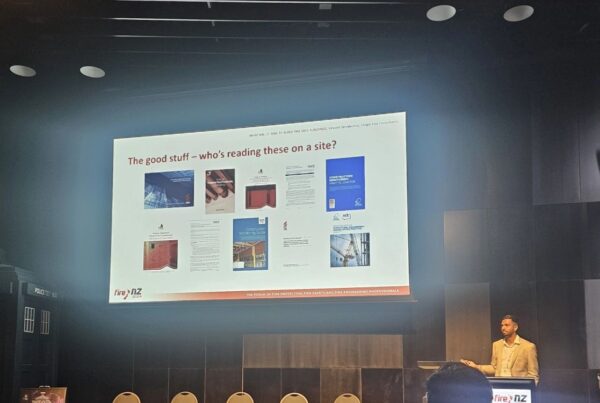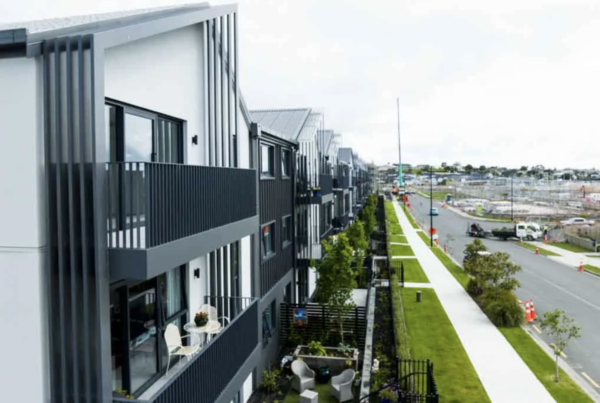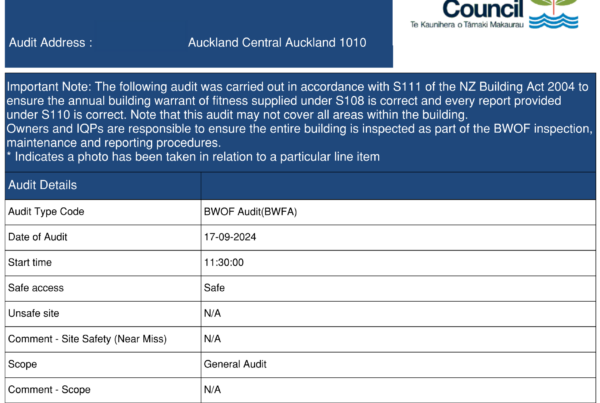Understanding the fire safety features required for high-rise buildings includes looking at examples of building failure. The recent Grenfell Tower fire in London offers important lessons and timely reminders for fire engineers and those involved in the design, construction and management of high-rise apartments.
Shortly after midnight on 14 June, a refrigerator caught fire in a fourth-floor apartment in Grenfell Tower. It spread to the 24-storey building’s external cladding and quickly travelled up the columns and around the building. Many residents were told to stay inside because of the building’s ‘defend in place’ strategy. But as flames broke into apartments, residents fled into smoke-logged stairwell and lobbies. After an hour, the fire service started a full building evacuation. With no interconnected alarm system, residents were told to evacuate, we imagine, by door knocking. Many died trying to escape.
While we can’t rule out a fire of this magnitude occurring in New Zealand, it’s much less likely. Here, internationally-held general principles for providing fire-safe building are evident in almost every apartment building. While there is not a set definition of a high-rise building it’s generally considered to be more than 7 to 10 levels above ground. Regardless of the size and height of the building, the primary structure will be designed to keep the building standing in the event of a fire. Fire detection systems provide early warning. There will be restrictions on the combustibility of internal linings. Each apartment will be fire separated from other apartments and stairwells will have fire rated walls and floors.
In most high-rise apartment buildings, and particularly as they get taller, sprinkler systems will be activated to contain the initial fire before it reaches the cladding. High-rise buildings also have interconnected alarm systems and the general escape strategy is ‘one out, all out’ or progressive evacuation. Almost without exception, high-rise buildings in New Zealand have two escape stairs, allowing better fire service access through the building.
Let’s take a closer look at the general principles, many of which are already incorporated in the Building Code Compliance Documents.
A sound supporting structure: the primary supporting structure should remain standing for the duration of a fire. The taller the building, the greater the number of people affected by a failure. The fire rating of the primary structure tends to increase with height to account for uncertainty in design assumptions.
Fire cells: the main way to control a fire is to divide the building into smaller fire separated sections called fire cells, which limit the spread of fire and smoke.
A fire suppression system: in recently-constructed buildings more than ten metres (three floors) tall, the building will typically have a sprinkler and alarm system, unless it has two escape stairs. If the building is more than 25 metres (seven floors) tall, it will have two escape stairs a sprinkler and alarm system.
Fire-retardant cladding: the maximum fire service reach is around 25 metres. Exterior cladding on buildings above this height will be fire retardant or non-combustible.
Effective and efficient evacuation: in high-rise buildings there will never be enough stairs to evacuate everyone immediately. To avoid blocking stairs and give priority to the people closest to the fire zone, the fire floor plus one or two floors above and below are evacuated first. The remaining floors are then progressively evacuated.
As the building height increases, so does the need to provide rest zones or refuge areas where people can take a break from the stairs and let fitter evacuees through. To keep stairs smoke-free, they’re either pressurised so smoke cannot enter or naturally ventilated to let smoke escape. Ventilated smoke lobbies also prevent smoke entering the stairway.
Fire service-friendly: in recently constructed buildings more than 10 metres (three floors) tall, the building will typically have a fire hydrant system for fire service use, installed in stair shafts. Stairs need to be smoke-free for firefighters, with smoke-free zones set up below the fire floors.
Learning the lessons, meeting the challenges
The Ministry of Business, Innovation and Employment (MBIE) and local councils are investigating how many buildings have combustible cladding. But determining their performance by testing only a small section of cladding may not be enough. Grenfell Tower has taught us that we need to test the whole assembly rather than just the exterior face of the cladding. We need to pay attention to the details and take care with last-minute design changes.
We can’t be complacent about our fire safety design methodologies. We need to find even more effective design measures to engineer fire-safe high-rise living. Fire safety features are usually a complex set of systems. The more fire safety features there are in a building, the less impact the failure of any one feature will have on the outcome in the event of a fire. Last year, MBIE convened a working group made up of members of the Society of Fire Protection Engineers, the Fire Service, BRANZ and the University of Canterbury Fire Engineering Faculty to review the verification design method (C/VM2) for fire safety in buildings and help determine design improvements. A draft for proposed changes was made available for public comment earlier this year and MBIE is reviewing the feedback.
Disasters like the Grenfell Tower fire remind us to be vigilant when it comes to harm, as in this case, and others, there were missed opportunities to address known risks. When a disaster like this happens, nothing can assuage the collective conscience.
This article, an opinion piece by Michael James, first appeared in the December 2017 edition of Engineering New Zealand’s magazine, EG, and appears here with the kind permission of Engineering New Zealand



